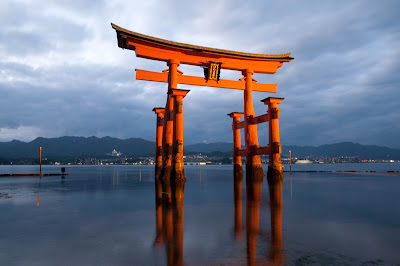Night shooting is a mis-nomer. It should be called 'evening' or 'dusk' shooting because, if you leave your night shooting till the sky has turned black your pictures are likely to look gloomy, heavy or uninteresting.
The best time for shooting is early evening, just as the sun is going down and while the artificial lights are being switched on. There's a point you reach where the balance between artificial and ambient light is just right. This is normally over in only 10 or 15 minutes.
My suggestion for anyone wanting to shoot after this time is to zoom in and fill the frame with as much color as possible. This is kind of difficult if you're shooting in the country (because there are very few lights on) but it if you're staying in the (inner) city, there's usually plenty of action in the form of neon lighting, to shoot. Even though I prefer to shoot during the golden hour around dusk, here are some tips on how to get the best results shooting in cities after dark.
1: Use a tripod
2: Use a tripod
3: USE A TRIPOD!
OK, I think we got that point. There's no point in shooting at night unless a rigid tripod is being used. Hand-holding is almost a waste of time unless you can lean on a pillar, support the camera on a railing, or similar, or find some other way of stabilising the camera.
Even the slightest vibration is enough to produce a 'so what' picture. Raising the ISO does help stability but at night, the noise this generates makes the whole exercise seem a bit pointless.
 |
| 3 stops over-exposure gives a good sky color. 30secs, f5.6, ISO100 |
 |
| Underexpose heavily to record detail in the highlight areas. 3secs, f5.6, ISO100 |
The best way to get a shot like this is to use a tripod and make three exposures (the lightest and darkest are included here to give you an idea of what these should look like.). These frames are then put together in post using Photomatix Pro. In this example I used the Tone Mapping option as this is good for handling extreme contrast. The blurred sky is a result of the clouds moving during the exposure.
TIPS:
1: Tripod
2: Cable release NEVER press the shutter directly as this does move the camera/tripod combo
3: ISO 100, never higher
4: Set your camera to shoot a custom color parameter. These can be modified to produce less contrast - which helps with the final tone control.
5: Use AEB (bracketing) to get the three exposures. Nikon DSLRs can shoot up to nine images in one bracket. If you need a wider exposure, work in Manual metering mode.






























































